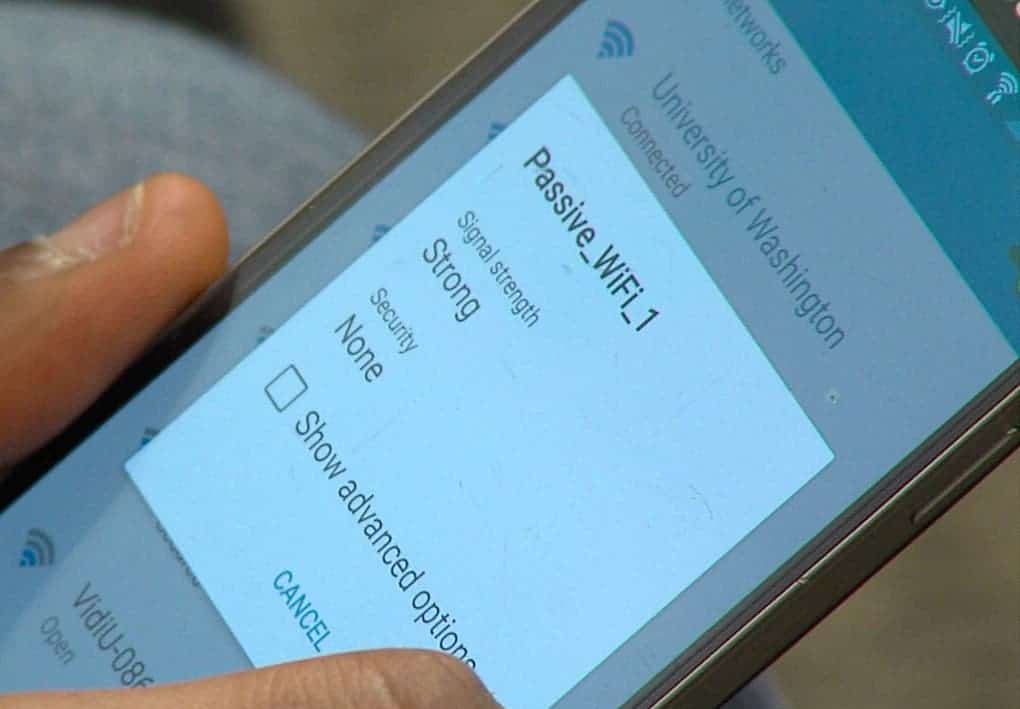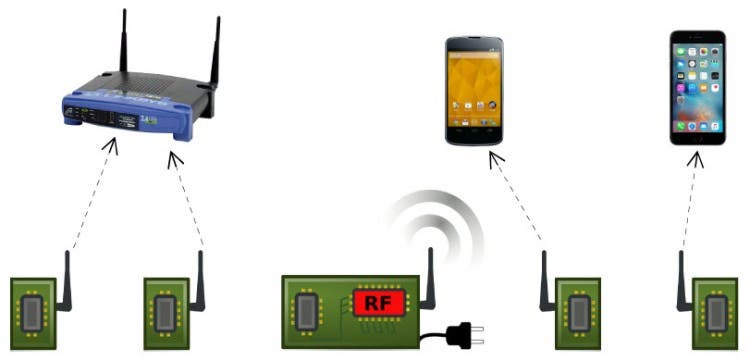Wi-Fi use can account for up to 60 percent of the phone’s total energy consumption. Even if you aren’t actually connected to a network, having it on will drain a lot of energy because the device is constantly searching for a signal. University of Washington researchers want to flip Wi-Fi energy use upside down. They’ve invented a new protocol and technique that uses 10,000 less energy. The same signal can be used to power devices without the need of an external power source. Cameras, temperature or motion sensors can all be power and connected to the internet at the same time using ‘passive Wi-Fi.’

UW computer scientists and electrical engineers have generated “passive” Wi-Fi transmissions that use 10,000 times less power than current methods.University of Washington
Wireless electricity is far from new, but getting a device to also communicate is a bit more challenging. The team showed that it’s possible to turn weak signals into power and also communicate through a process called backscattering. The gist is that an additional device is used to reflect incoming radio waves from a source, and it’s this reflected signal that’s picked up by the devices. This is how an RFID chip inside a contactless card works. But a key difference is the technology developed at University of Washington doesn’t need a special device to read the signal, as is the case of contactless cards.
For instance, one version of the tech developed by the researchers called ‘passive Wi-Fi’ lets battery-free gadgets connect with conventional devices such as computers and smartphones by backscattering Wi-Fi signals.
There’s a digital and analog side to radio transmission. While the digital side has become extremely energy efficient in the past two decades, the same can’t be said of the analog side. So, what the researchers did was effectively decouple the analog and the digital signals. The Passive Wi-Fi architecture assigns the analog, power-intensive functions – like producing a signal at a specific frequency — to a single device in the network that is plugged into the wall.

In Passive Wi-Fi, power-intensive functions are handled by a single device plugged into the wall. Passive sensors use almost no energy to communicate with routers, phones and other devices. Image: University of Washington
Next, an array of sensors produce Wi-Fi packets of information using very little power by simply reflecting and absorbing that signal using a digital switch. Prototype passive Wi-Fi devices have transfered data as far as 100 feet and made connections through walls. Data was transferred at 11 megabits per second.
“All the networking, heavy-lifting and power-consuming pieces are done by the one plugged-in device,” said co-author Vamsi Talla, an electrical engineering doctoral student. “The passive devices are only reflecting to generate the Wi-Fi packets, which is a really energy-efficient way to communicate.”
“Our sensors can talk to any router, smartphone, tablet or other electronic device with a Wi-Fi chipset,” said co-author and electrical engineering doctoral student Bryce Kellogg. “The cool thing is that all these devices can decode the Wi-Fi packets we created using reflections so you don’t need specialized equipment.”
The system uses 10,000 times less energy than conventional methods, and uses a thousandth as much power as the Bluetooth LE and ZigBee communications standards.
“Even though so many homes already have Wi-Fi, it hasn’t been the best choice for that,” said co-author Joshua Smith, UW associate professor of computer science and engineering and of electrical engineering. “Now that we can achieve Wi-Fi for tens of microwatts of power and can do much better than both Bluetooth and ZigBee, you could now imagine using Wi-Fi for everything.”
Passive Wi-Fi was named one of 10 breakthrough technologies of 2016 by MIT Technology Review.









